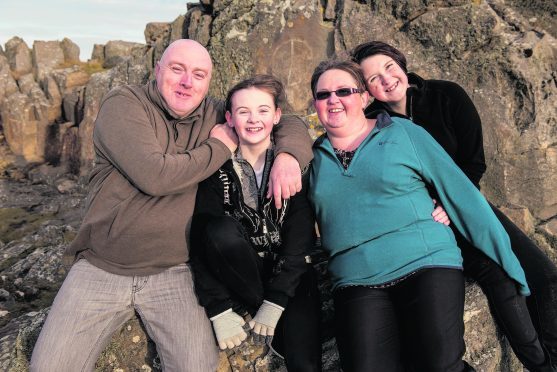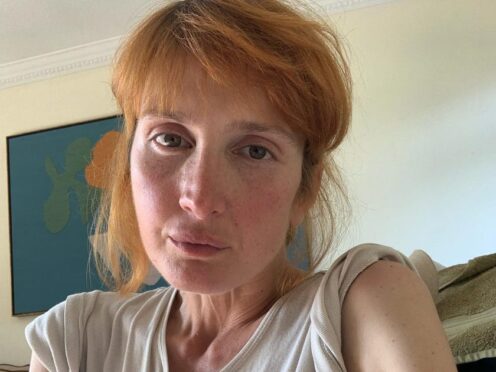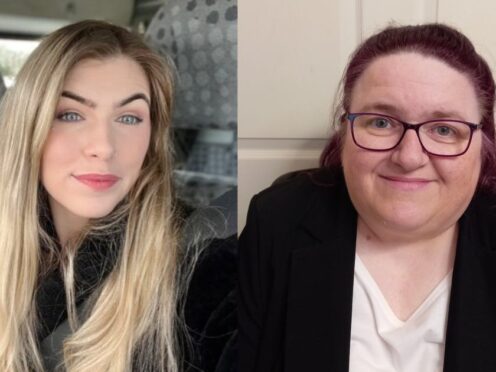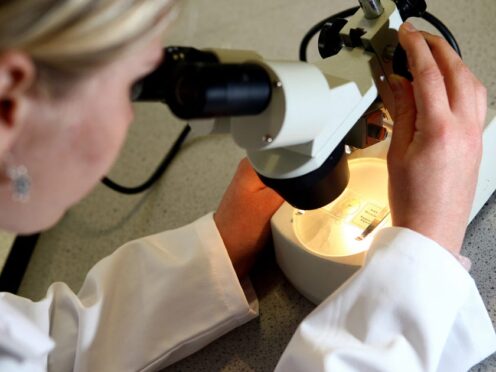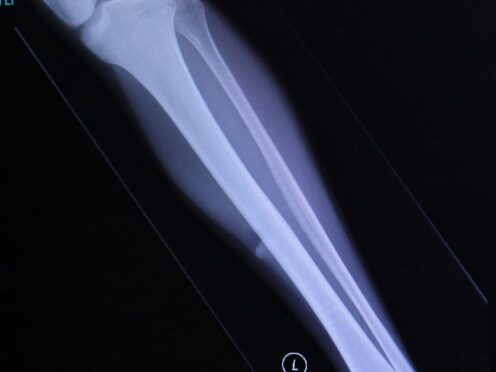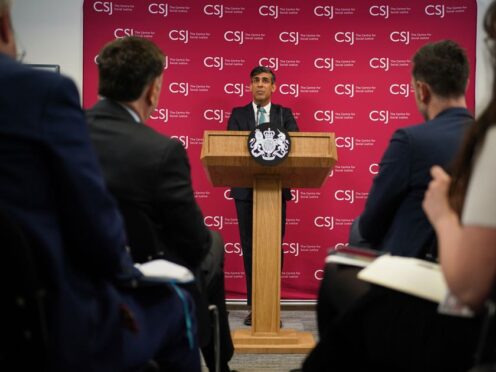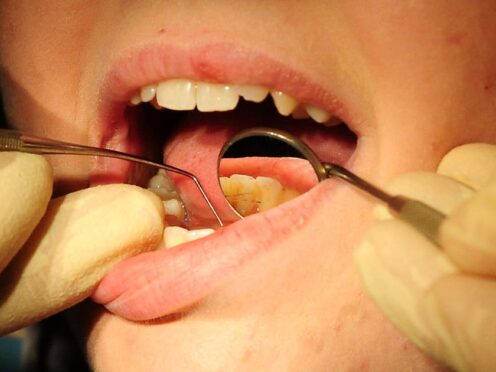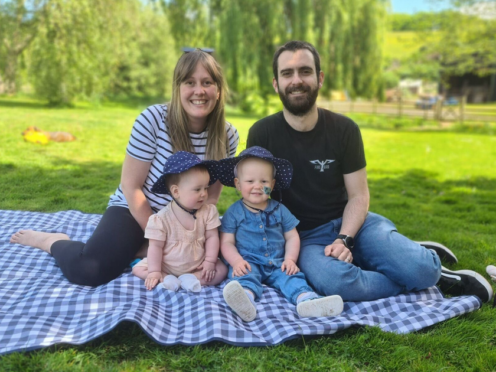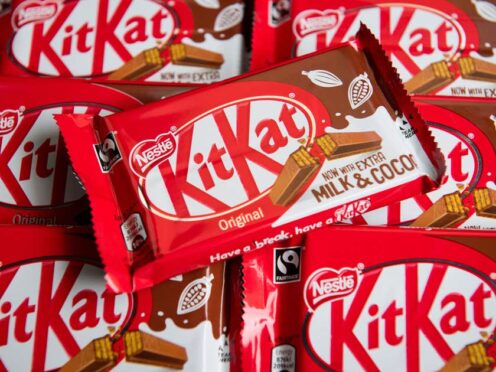More than 285,000 people in Scotland are living with diabetes.
It’s a challenging condition which requires careful management every single day in order to stay healthy.
Yet, despite its prevalence, the condition is still quite misunderstood. From people not recognising it as a serious health condition to a misconception that all types of diabetes are caused by being overweight, there are many misconceptions surrounding the condition.
For people living with it, being supported with the knowledge, skills and care to manage their diabetes well is essential.
One family who are more aware than most are the Campbells in Hopeman, Moray, whose youngest child, 13-year-old Laura, was diagnosed with type 1 diabetes less than two years ago.
Mum Sandie said: “It was such a shock when Laura was first diagnosed. She had been unwell for a while and we’d been back and forward to the doctor – not always seeing the same GP as we were often getting emergency appointments. It was getting very frustrating not knowing what was wrong but when I got a call on a Friday morning to take Laura to the hospital, it was overwhelming.
“There was so much to take in and try to understand. My husband Alex was in Edinburgh working and my eldest daughter Ally was in school, so it was just myself and Laura at first.”
Laura was diagnosed with type 1 diabetes which is an auto-immune condition which develops when the insulin-producing cells in the body have been destroyed and the body is unable to produce any insulin. No one knows exactly what causes it but it is not lifestyle related and has nothing to do with being overweight or eating too many sweets.
People with type 1 diabetes have to manage the condition by administering insulin by pen injection or insulin pump.
Dad Alex said: “When Sandie called to let me know what was going on I tried to get home as soon as I could and there were so many questions running through my head. I was on the train back from Edinburgh googling ‘what is diabetes?’ and trying to find out what I could about the condition and what it would mean for Laura and our family.
“That weekend at the hospital, we couldn’t have asked for anything more from the consultant and nurses – they were fantastic. They took time to explain everything to make sure we understood and they didn’t mind going over some points more than once as we tried to digest all the information.”
For people living with type 1 diabetes, every day is a careful balancing act to manage their blood glucose levels to avoid going too high (hyperglycaemia) or too low (hypoglycaemia or “hypo”) both of which can make a person very poorly and, if not treated in time, can require medical treatment or hospitalisation.
When Laura returned home the family had to follow a strict regime for mealtimes, blood testing and administering insulin. Laura’s blood glucose levels had to be tested every three hours including throughout the night; more if Laura had been unwell or had a hypo. The Carb and Calories book the hospital gave them became their bible as they consulted several times a day to find out how many carbohydrates were in each meal and how much insulin was required.
Sandie said: “It was a struggle having to test Laura’s blood so often. I don’t think I’d ever been up as much through the night, even when the girls were babies. It was also difficult to always have to think ahead about mealtimes and snacks.
“Even making a quick cup of tea for Laura became a bit of a rigmarole as we had to get the measuring jug out for the milk and check the book to see how many carbs it would be.
“We went on holiday to England a few weeks after Laura was diagnosed and it was the most regimented holiday we had ever been on. Every day we would plan what we were doing and made sure to be back in time to cook our meals as we didn’t feel confident ordering at a cafe and trying to work out the carbs.”
For the most part, Laura has taken her type 1 diabetes diagnosis in her stride and she set her mind to understanding how to manage her condition. She learned how to calculate the carbs in her food and became determined to move from pen injections to an insulin pump as soon as possible.
Laura said: “I think when I was first taken to hospital and diagnosed with type 1 diabetes, I was more annoyed at missing my drama class. After that, I just got on with it and it soon seemed quite natural for me to check my blood, work out the carb content of my food and inject insulin. I never really liked injecting insulin though – especially not in my stomach. I was keen to get an insulin pump as soon as I could and it’s been great since I’ve had it.
“It just gives me much more freedom to do activities and eat what I want and when I want. I’m lucky that I was able to get the insulin pump so quickly and it’s really sad to hear that some people are still waiting as it’s something which can really help change people’s lives for the better.”
Laura is a passionate member of the scouts and always keen to take on outdoor adventuring such as kayaking and rock climbing. She will not let her type 1 diabetes hold her back, although it has presented her with some challenges.
Laura said: “I was gorge walking and it was really cold and wet. When we got to the top of the gorge I had to check my blood glucose but it took me ages to warm up my fingers enough to be able to finger-prick to do the test.
Laura and her family are supporting Diabetes Scotland’s campaign, The Next Step, calling for better access to diabetes technology such as insulin pumps and continuous glucose monitoring for all who can benefit. They currently feature in a campaign video for the charity: www.diabetes.org.uk/the-next-step
Sandie said: “Like all parents with a child with type 1 diabetes, I wish there was a cure. Until that time, however, I wish it could be made a bit easier to manage Laura’s diabetes. For example, if Laura had a CGM (continuous glucose monitoring) she wouldn’t have to do blood tests all the time as it would be checking blood glucose for her.
“It would let us know if her blood sugar is rising or falling so she can treat with insulin or eat some food to avoid going too high or too low and making her feel ill. Unfortunately, it’s not something which is routinely available from NHS Scotland but we hope that changes soon.
“As a family living with type 1 diabetes, it’s great to know that diabetes technology is evolving all the time. Looking ahead, something like the artificial pancreas might be an option which could mean that we would hardly have to think about her diabetes at all.”
Find out more at www.diabetes.org.uk/diabetesweek
